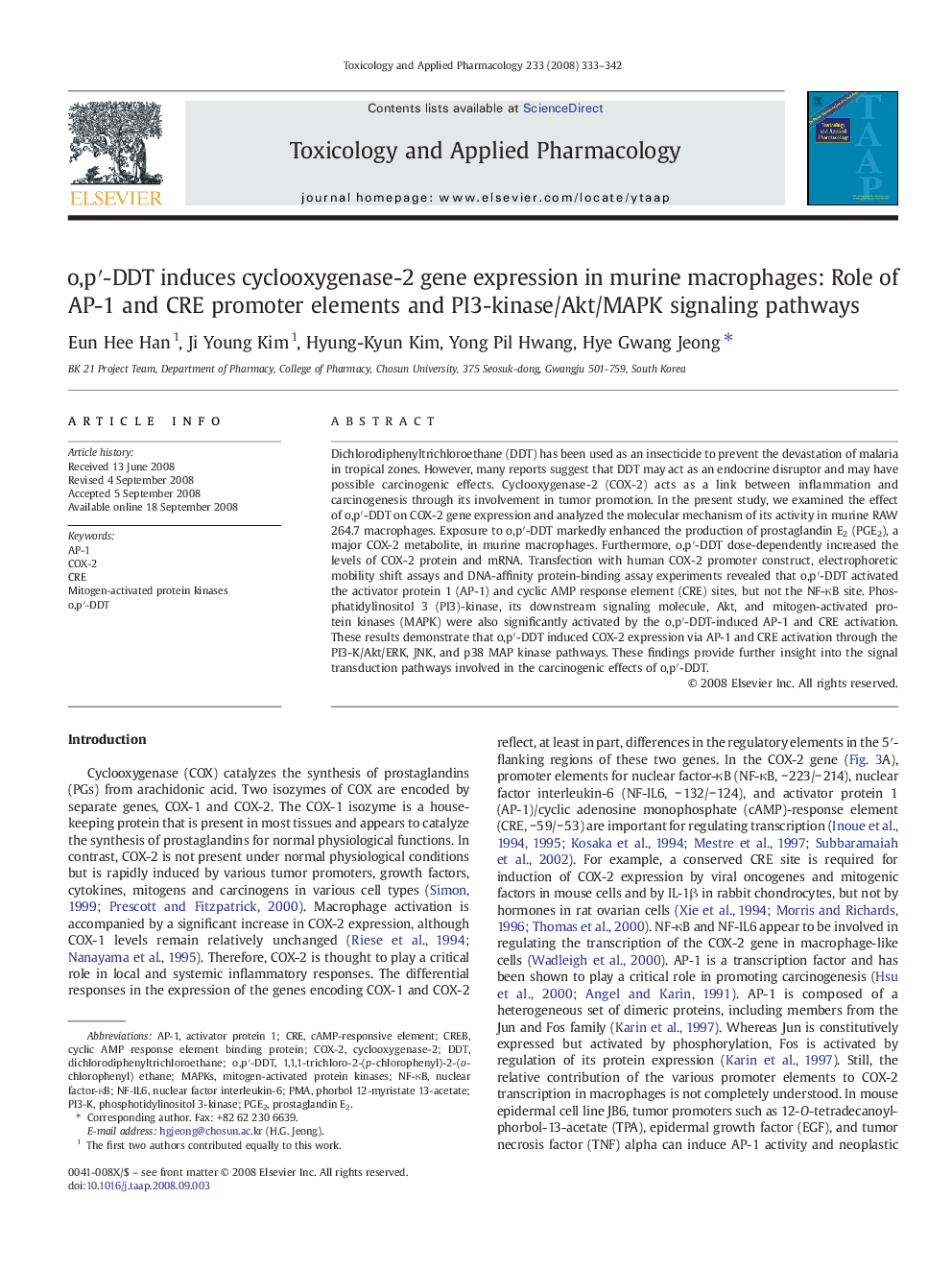| Article ID | Journal | Published Year | Pages | File Type |
|---|---|---|---|---|
| 2570873 | Toxicology and Applied Pharmacology | 2008 | 10 Pages |
Dichlorodiphenyltrichloroethane (DDT) has been used as an insecticide to prevent the devastation of malaria in tropical zones. However, many reports suggest that DDT may act as an endocrine disruptor and may have possible carcinogenic effects. Cyclooxygenase-2 (COX-2) acts as a link between inflammation and carcinogenesis through its involvement in tumor promotion. In the present study, we examined the effect of o,p′-DDT on COX-2 gene expression and analyzed the molecular mechanism of its activity in murine RAW 264.7 macrophages. Exposure to o,p′-DDT markedly enhanced the production of prostaglandin E2 (PGE2), a major COX-2 metabolite, in murine macrophages. Furthermore, o,p′-DDT dose-dependently increased the levels of COX-2 protein and mRNA. Transfection with human COX-2 promoter construct, electrophoretic mobility shift assays and DNA-affinity protein-binding assay experiments revealed that o,p′-DDT activated the activator protein 1 (AP-1) and cyclic AMP response element (CRE) sites, but not the NF-κB site. Phosphatidylinositol 3 (PI3)-kinase, its downstream signaling molecule, Akt, and mitogen-activated protein kinases (MAPK) were also significantly activated by the o,p′-DDT-induced AP-1 and CRE activation. These results demonstrate that o,p′-DDT induced COX-2 expression via AP-1 and CRE activation through the PI3-K/Akt/ERK, JNK, and p38 MAP kinase pathways. These findings provide further insight into the signal transduction pathways involved in the carcinogenic effects of o,p′-DDT.
